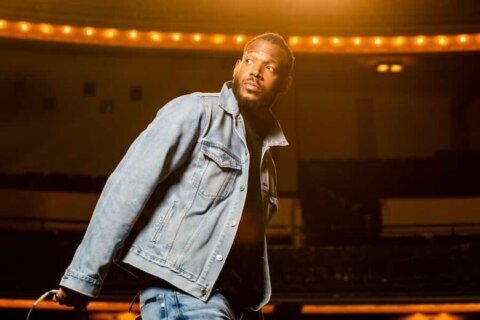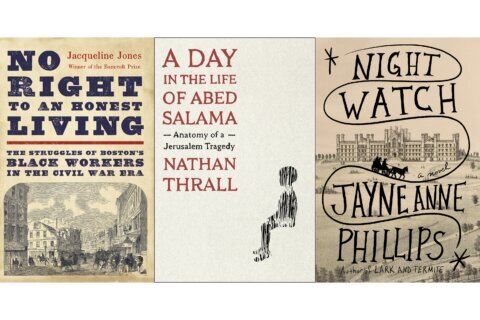Few filmmakers boast such auteur cred that we rush to the movies whenever their name is on the marquee. So when we see the phrase “The Ninth Film by Quentin Tarantino,” we realize we’re witnessing the penultimate film by a master who has hinted at retirement after 10 flicks — with not a bad one in the bunch.
The former video store clerk turned game-changing director wears his love for cinema on his sleeve, referencing B-movies at every turn, from kung fu to gangsters to spaghetti westerns. He’s also become a delicious agent for revisionist history, reimagining Hitler’s fate in “Inglourious Basterds” (2009) and delivering a slave revolt against a plantation in “Django: Unchained” (2012).
Now, his obsession with history and cinema collide in “Once Upon a Time in Hollywood,” set in the summer swelter of 1969 Los Angeles, where the Manson murders marked the end of Hollywood’s Golden Age. It’s here we find fictional TV western star Rick Dalton (Leonardo DiCaprio) and his veteran stunt double Cliff Booth (Brad Pitt), who struggle to stay relevant in the film industry as danger looms for Roman Polanski’s ill-fated wife, actress Sharon Tate (Margot Robbie).
The film’s driving engine is the bromance between DiCaprio and Pitt, who’s described as “more than a brother, less than a wife.” It’s fittingly set the year Paul Newman and Robert Redford delivered the ultimate buddy picture in “Butch Cassidy and the Sundance Kid” (1969). Who better to portray studs for this generation than the hunks from “Thelma and Louise” (1991) and “Titanic” (1997), this time moving from chiseled to grizzled during shirtless rooftop repairs?
Their lovable bond masks their individual shortcomings, which all compelling characters have. Pitt’s Booth is haunted by rumors of his wife’s drowning (a la Natalie Wood) and now lives in a trailer behind a drive-in theater where he feeds his pitbull better food than his own diet of mac and cheese. His charming bravado shines best as he throws hands with Bruce Lee (a spot-on Mike Moh).
Meanwhile, DiCaprio plays Dalton with a convincing stutter beneath the glassy eyes of an alcoholic. He throws temper tantrums upon hearing the hard truth that he’s selling himself out for TV guest spots, fearing that his star is fading. Several scenes stand out: (a) weeping while reading a paperback novel about an over-the-hill gunslinger; (b) drunkenly threatening his mirror image if he flubs another line; and (c) the moment of truth acting across his precocious child co-star.
Along the way, we meet Al Pacino as a forward-thinking studio executive, Kurt Russell as a peacekeeping producer, and the late Luke Perry as DiCaprio’s on-screen rival (a battle of ’90s teen heartthrobs). Likewise, Burt Reynolds was supposed to make his last appearance as the owner of the Spahn Movie Ranch, but after his death, his contemporary Bruce Dern had to sub in as the enabler of the Manson clan, led by Dakota Fanning as the infamous Squeaky Fromme.
Rising to the top of all this star power is Robbie, who debuted as white-collar arm candy in “The Wolf of Wall Street” (2013) before stealing “Suicide Squad” (2016) and showing range in “I, Tonya” (2017). Here, Tarantino puts her on an idealized pedestal with slow-mo tracking shots of her boots dancing down the sidewalk and her hair blowing in the wind of fancy cars. For the first half of the movie, you’ll wish we got to know her more, until we finally get an endearing sequence of her watching her own movies, beaming with pride as she giddily gazes at the crowd.
Of course, the true star is the city itself, as Tarantino fills each and every frame with Los Angeles in all of its 1969 glory. It’s a time capsule of retro wardrobe, throwback hairstyles, classic hot rods and famous restaurant billboards. These are presented in snappy montages and impressive crane shots, rising from Pitt’s car over the drive-in theater screen or over DiCaprio’s swimming pool to find Polanski and Tate’s doorway, often to the sound of period radio commercials.
Occasionally, the Hollywood worship becomes indulgent as we meander around Tinseltown. The film is packed with 4:3 black-and-white cutaways of the films the characters are shooting, as well as dream sequences of Leo superimposed over Steve McQueen in “The Great Escape” (1963). At two hours and 45 minutes, it feels like excess fat that could have been trimmed. Even the title is desperate to join the club of Sergio Leone’s “Once Upon a Time in the West” (1968) and “Once Upon a Time in America” (1984).
Thankfully, it’s all layered with Tarantino’s trademark touch for offbeat music choices, avoiding cliché tunes in favor of deep cuts (Paul Revere & The Raiders’ “Hungry”) and unique covers (José Feliciano’s “California Dreamin'”). The atmosphere recalls late-season “Mad Men” when Don and Megan Draper visit L.A. to Spencer Davis Group’s “I’m a Man.” One can imagine Tarantino reading the Draper-Tate internet conspiracies and hatching this film’s crazy concept.
It might sound tasteless to build a buddy comedy around the Manson murders, fearing that it’s building to a Tarantino-style pregnant bloodbath. Not to worry, the Manson family isn’t glorified. Rather, they’re presented as hacks, first as worthless dumpster divers, then lazy bums at a hippie commune, then bumbling idiots stumbling into history. It’s Tarantino’s attempt to take the mythical allure out of the evil serial killers, insisting they weren’t cult legends but hapless fools.
Granted, the climax is violent, so consider yourself warned if you were at all squeamish during “The Hateful Eight” (2015). Even so, you’ll be pleasantly surprised at how it all plays out, leaving us with a commentary on pop-culture violence as perpetuated by Hollywood. As one Manson girl said, “For years, Hollywood showed us how to kill. Now, we’re gonna kill the ones who taught us.”
Leaving the theater, you’ll wonder how history might have changed had this horrific murder not occurred. Would Tate have become a bigger movie star, not to mention a mother? Would Polanski have made more Hollywood masterpieces like “Rosemary’s Baby” (1968) and “Chinatown” (1974) rather than flee the country over statutory rape charges (requiring a scene of Pitt turning down underage sex)? Would Hollywood — and our culture as a whole — be less cynical today?
Alas, we’re left with the world that 1960s Hollywood built en route to the 1990s revolution of Quentin Tarantino. “Once Upon a Time in Hollywood” is a departure from Tarantino’s flashier work, showing a more mature, contemplative side to the hyper cinephile. As a result, it likely won’t crack your Top 5 (“Pulp Fiction,” “Reservoir Dogs,” “Inglorious Basterds,” “Django: Unchained,” “Kill Bill”), but the sixth best by Tarantino is still better than the very best by most other mortal filmmakers.
Let’s face it, it’s impossible for Tarantino to out-Tarantino himself, nor should he. A cocktail doesn’t need to be laced with acid to wash down smoothly. To quote my favorite line from the entire movie: “This booze doesn’t need a buddy.”









